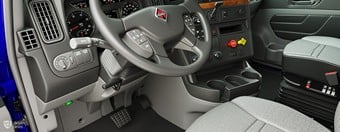The Tank Vehicles (N) endorsement, once added to your Class A or Class B Commercial Driver’s License (CDL), allows you to drive vehicles designed to transport liquids or gases in a tank or tanks with an individual rated capacity of more than 119 gallons and a combined total capacity of 1,000 gallons or more. This qualification is highly valued in New Hampshire, where the fuel and petroleum distribution industry has a high demand for tanker drivers. However, you will also need a HazMat (H) endorsement to transport hazardous materials that are toxic to humans or the environment.
Weather can be quite challenging in the Granite State, especially during the winter months, when snow and ice test the skills of even the most experienced commercial drivers. When you haul 8,000 gallons of fuel from Manchester to Conway, there’s no room for error. You must fully master the controls of your tanker truck, and that includes the management of liquid surge.
Whether you are just getting started as a beginner or you’re an experienced driver who wants to obtain the “N” endorsement, the official 2025 CDL manual (New Hampshire CDL Handbook 2025) is your main point of reference. This manual explains various aspects of commercial driving, including the safe operation of tanker trucks, the pre-trip inspection, loading and unloading procedures, and handling emergency situations.















